44 F. high yesterday in the Twin Cities.
61 F. average high on April 22.
56 F. high on April 22, 2012.
.33" rain fell yesterday at KMSP as of 7 pm.
Icy/slushy AM commute - wet roads by midday.
60F by Friday
70s likely by Sunday.
Could Be Worse
Have I mentioned that July is the only month
where snow hasn't been observed somewhere in Minnesota? I'd like to
Explore Minnesota for signs of a warm front. Anything? You may be
interested to hear the latest mega-snow on record in the Twin Cities was
6.6" on April 29, 1984. As I recall the locals were thrilled that
year, too.
The sun is now as high in the sky as it was on
August 19. Even on a gray day the sun's invisible infrared radiation
will heat the ground, melting snow from below. Yes, it's hard to fathom,
but by this weekend you'll be staring out at your lime-green lawn,
serenaded by chirping robins.
This will be one of the more dramatic warm
fronts I've seen in my 30 years living here on the tundra: from
shin-deep slush to 70s in 5-6 days. The ECMWF is hinting at highs close
to 80F by Monday.
Good news for our mental health - bad news for
river flood potential, especially Red River Valley. If you live in an
area that usually floods you'll want to be on high alert the next 1-3
weeks.
Look at the bright side: the drought is rapidly
easing. Severe storm season has been delayed. Bugs & allergies are a
non-issue.
And you'll never take a warm front for granted again.
Ever.
Snowfall Amounts. As of 11 pm last night (before I
passed out onto my laptop) the heaviest amounts were in the southern
suburbs, some 4-5" amounts near Burnsville, Lakeville and Faribault.
Amounts dropped off the farther north you go across the metro. The
latest amounts from NOAA are
here.
Ring The Churchbells - Sounds The Sirens. I know
it's hard to believe, but a real warm front is brewing for the end of
the week; 60F possible by Friday, a good chance of 70s Sunday and
Monday. Most of the snow in your yard will be gone within 36-48 hours;
the impact of the sudden warm-up on heavy snow (5-10" of liquid water
equivalent) over northern Minnesota is unclear, but people living along
the Red River should be extra close-attention to rapidly changing
conditions in the coming weeks.
Instant June. The ECMWF map above, valid Sunday
evening, shows strong southwest winds, capable of 70s into much of
Minnesota, even some 80s over the Dakotas and western Iowa. Lingering
snow cover will keep temperatures 10 degrees cooler over far northern
Minnesota, still mild enough to produce rapid melting. Map: WSI.
Latest 6"+ Snowfall at MSP? Going back through the Minnesota Climate Office A
pril Climate Calendar
the latest 6"+ snowfall I can track down was 6.6" on April 29, 1984.
Yes, as I recall the locals weren't very happy that "spring" either.
File photo above: Brian Peterson, Star Tribune.
Keeping The Big (Global) Picture. I've said it
before, I'll say it again: it's buried somewhere deep in our caveman DNA
to look out the window, and assume the weather is similar -
everywhere. Of course nothing could be further from the truth.
Meteorologists study short-term variations in weather - climate
scientists look for (global) trends over decades, centuries and
millenia. On the day after Earth Day
Climate Matters looks at the disconnect between snow (here), and the rest of the USA and planet, which is warming up quite nicely.
States Show Rapid Rise Of Temps. Since First Earth Day. Here's an excerpt from a story at
Climate Central: "...
But
starting in 1970, the increase in temperature began to accelerate.
Every state’s annual average temperature has risen significantly since
then, at an average rate of .435°F per decade — about triple the
national average of 0.127°F over the years 1910-2012. Those are the
averages, but state-by-state differences remain. The
fastest-warming states — Arizona, Michigan, New Jersey and Minnesota
— have warmed by about 3°F over the past 43 years, or about .7°F per
decade; about twice as fast as Earth as a whole. The
slowest-warming states — Washington, Oregon, Alabama and Georgia, with
an increase of about .35° per decade — are more or less keeping pace
with the global average..."
The Only Thing Tempering My Excitement About A Real Warm Front.
As you know all too well by now - there's still plenty of snow on the
ground up north. The map above from NOAA shows SWE, the Snow Water
Equivalent, roughly how much water is locked in the remaining
snowpack: as much as 6-10" of liquid water over much of the Red River
Basin - water that will get flushed into the Red River in the coming
weeks as temperatures warm (and more rain falls, accelerating snow
melt). I have a hunch the 40% risk of a record crest in Fargo (NOAA
prediction) may rise in the coming days. I hope I'm wrong, but this
light-switch warm front has me a bit paranoid.
Flooding, Barge Accidents Halt Mississippi River Traffic.
And to think, a couple months ago barge traffic was almost halted on
the Mississippi due to drought and low water levels. Here's an excerpt
from
Reuters: "
Barge
shipping on the Illinois River and parts of the Mississippi River was
at a standstill on Monday as flooding forced the closure of numerous
locks and as crews worked to recover dozens of barges that broke free in
flood-swollen currents. The
U.S. Coast Guard closed the Mississippi between river mile markers 155
and 170 near St. Louis after 114 barges broke free from a fleeting
area late on Saturday and 11 of them sank..."
Photo credit above: "
Flooding is seen along the
Mississippi River near LaGrange, Missouri, in this April 21, 2013
handout photo courtesy of the Missouri Governor's Office." Picture taken April 21, 2013. REUTERS/Office
of Missouri Governor Jay Nixon/Handout
Flooding Threatens Along Mississippi River From Iowa To Missouri. Here's a video and excerpt from a
Washington Post story on the growing risk of major flooding: "
The
fast-rising Mississippi River was making travel difficult Saturday,
both on the river and for those simply trying to get across it. The
Mississippi, Missouri and other Midwestern rivers in at least six
states have surged since torrential rains drenched the region over the
past few days. At least two deaths are blamed on flash flooding and a
third was suspected, while crews in Indiana were searching for a man
whose car was swept away. The National Weather Service predicted what it
characterizes as “major” flooding on the Mississippi from the Quad
Cities to just north of St. Louis by this weekend, with similar
projections farther south into early next week. Some smaller rivers are
expected to see record flooding..."
Flooding Along The Illinois River. Here are some remarkable photos from
The Journal Star,
documenting the extent of flooding on the Illinois River Why do I
think this is an omen, especially for the Red River Valley within 2
weeks? I hope I'm wrong.
Photo credit above: RON JOHNSON/JOURNAL STAR "
A boat sits in a flooded portion of a neighborhood along Oak Lawn Street in Chillicothe on Saturday."
Record Crests In Illinois. Flooding last week in Illinois was historic - details from
NOAA.
8th Warmest March - Worldwide.
NOAA NCDC reports
10th warmest, but NASA GISS data suggests that last month tied 2006
for 8th warmest. Thanks to Graham Saunders for bringing
this link to my attention.
One Way Ticket To Mars? Sign Me Up! Here's an excerpt of a curious
Guardian article about a Netherlands company planning to send 4 astronauts on a one-way journey to the Red Planet in 20 years. Interested? "
On Monday, 17 years after the pioneering astronomer set out his hopeful vision of the future in 1996, a company from the Netherlands is proposing to turn Sagan's dreams of reaching Mars into reality. The company, Mars One,
plans to send four astronauts on a trip to the Red Planet to set up a
human colony in 2023. But there are a couple of serious snags.
Firstly, when on Mars their bodies will have to adapt to surface
gravity that is 38% of that on Earth. It is thought that this would
cause such a total physiological change in their bone density, muscle
strength and circulation that voyagers would no longer be able to
survive in Earth's conditions. Secondly, and directly related to the
first, they will have to say goodbye to all their family and friends,
as the deal doesn't include a return ticket..."
Image credit above: "
NASA's Curiosity rover lands on Mars in 2012." Photograph: Nasa/JPL-Caltech/Rex Features
Boston Made TV Feel "So Slow". Were you on Twitter
during the Boston terrorism event? There is always a risk of getting bad
information on social media, but you can also get erroneous "news" on
traditional media. It all comes down to "trusted sources" on Twitter -
the velocity of news was incredible last week, and as this story at
mediaite.com
points out, Twitter almost made the TV networks seem like they were
operating in slow motion. It's part of the democratization of media. I
suspect it's not a fad, but a powerful trend in the making: "...
(CNN)
Host Howard Kurtz and Daily Beast columnist Lauren Ashburn went over
some of the scoops and images which twitter users were able publish
instantly over the course of the week’s events, from the instant the
bombing in Boston was reported to the eventual capture of Dzokhar
Tsarnaev. “Is Twitter and other social media sites, are they putting
pressure on the media?” Kurtz asked. “Are they adding to what the media
are able to report? Because, after all, there are only so many
journalists in every newsroom.” Kurtz said that Concha had identified a
trend in which Twitter has opened the dialogue to millions of people
rather than a select few in old media. “I would say there are now six
news networks,” Concha said. “There’s CBS, NBC, ABC, CNN, Fox, and
Twitter...”
* more on the (sometimes imperfect) coverage on the networks last week from
Huffington Post.
TODAY: Waking up to 2-5" slush. Mostly cloudy. Wet PM roads. Winds: NW 15. High: near 40
TUESDAY NIGHT: Partial clearing - a few icy patches by morning. Low: 30
WEDNESDAY: Sunny start. PM rain/snow showers. High: 45
THURSDAY: More sun, turning milder. Wake-up: 31. High: 47
FRIDAY: Partly sunny, feels like spring. Wake-up: 40. High: 61
SATURDAY: Green lawns, chirping birds? Very nice with a mix of clouds and sun. Wake-up: 45. High: 67
SUNDAY: Blue sky, lukewarm breeze. Wake-up: 50. High: 73
MONDAY: Plenty of sun - warm winds. Nighttime T-storms? Wake-up: 53. High: 76
* photo courtesy of Laura Arne, who snapped this shot last night at her home in Minnetonka.
Climate Stories...
Minnesota: 4th Fastest Warming State In The USA. The graphs above are from a
Climate Central article,
showing the pace of warming since 1973. Yes, it's cold and snowy
outside (today) over Minnesota, but that's weather, not climate. In
spite of a cold rut for the Upper Mississippi Valley in recent months
March was the 8th warmest on record, worldwide, according to NASA. Try
to keep the big picture.
On Earth Day 2013, A Planetary Report Card On Global Warming. Here's an excerpt from a story at
The Christian Science Monitor: "...
Most
climate scientists trace global warming to the relatively rapid
buildup of atmospheric CO2 from the burning of fossil fuels long
sequestered deep underground. Though only 0.04 percent of all the gases
in the troposphere, where weather happens, CO2 is second only to
water vapor as the most abundant greenhouse gas. And where a water
molecule may remain airborne for up to 10 days before returning to the
surface as rain, a newly emitted molecule of CO2 can remain in the air
for centuries. "From the grossest physical indicator, we're not
getting the job done as a planet," says Alden Meyer, director of the Union of Concerned Scientists office in Washington, of the steady rise in CO2 levels..."
Photo credit above: "
The aurora borealis appeared just
north of a snow-covered Canada in this image taken from the
International Space Station last year. On Earth Day 2013, organizers
have focused on global warming as a top issue." NASA/File
This Is What Climate Change Looks Like. After last
week's record deluge, Chicago residents could see the transformation in
Lake Michigan as the waters became stained with brown floodwaters,
run-off from historic rains. Here's an excerpt from
Crain's Chicago Business: "
One
of the things that deceives people about climate change is that they
cannot see it in their day-to-day lives. But some striking images have
emerged from a local photojournalist documenting an ugly interaction between the Chicago River and Lake Michigan
that followed last week's enormous storms. It was an event that
likely provided a glimpse of what climate change holds in store for
Chicago and beyond. Lloyd DeGrane has documented all manner of
environmental degradation in this neck of the woods. (I am partial to photos he did for The Reader in Northwest Indiana.)
And like many good photographers, he has a knack for being in the
right place at the right time. He emailed me early in the morning of
April 19 with some startling images and this explanation..."
How The Burning Of Fossil Fuels Was Linked To A Warming World In 1938. Details in this story from Leo Hickman at
The Guardian: "
Seventy-five years ago this month an amateur weather-watcher from West Sussex published a landmark paper in the Quarterly Journal of the Royal Meteorological Society directly linking the burning of fossil fuels to the warming of the Earth's atmosphere. Guy Callendar
was a successful steam engineer by trade, but in his spare time he
was a keen meteorologist. In April 1938, his paper, "The artificial
production of carbon dioxide and its influence on temperature" (pdf), which built on the earlier work of John Tyndall and Svante Arrhenius,
was published with little fanfare or impact. It was only in the
proceeding decades that the true significance of his conclusions would
be heralded..."
Photo credit above: "English
engineer Guy Stewart Callendar who expanded on the work Swedish
scientist Svante Arrhenius and developed the theory called Callendar
effect that linked rising carbon dioxide concentrations in the
atmosphere to global temperature." Photograph: University of East Anglia Archives.
Is Our Extreme Weather Linked To Climate Change? Here's an excerpt of a story at
The La Crosse Tribune: “...
It’s
a shame that people and ideas are pigeonholed into classifications of
alarmism or science deniers,” Lussky said. “I don’t know that I’ve
seen any two people that would be classified by some as skeptics that
would agree with each other.“ Calling the debate on climate change
closed is the antithesis of science, Lussky said. And combining
science with politics isn’t always a great mix. “If you’re going to
stay true to the science, becoming an advocate… it takes away from
that,” he said. Lussky earned his master’s degree at the University of
Wisconsin, doing research for the Center for Climatic Research that
Notaro helps guide. Yet, he disagrees with some of its conclusions.
“There’s so much we don’t know,” he said..." (file derecho image: Brittney Misialek, NOAA SPC).
China's Clean Energy Investment Puts America To Shame.
Will we be buying most of our solar panels, wind turbines and
next-generation batteries from China? I'm starting to wonder. Here's an
excerpt from an important article at
The Motley Fool: "...
In China, the energy debate is very different.
When China sees its imports of coal rising and dependence on foreign
oil growing, it springs into action. Not by screaming, "Drill, baby,
drill," but by investing billions of dollars in home-grown energy
sources. Yes, I'm talking about clean, renewable energy, and China's
investment in these energy sources make U.S. subsidies look like the
half-hearted effort they are. China has put tens (maybe hundreds) of
billions of dollars into building a renewable manufacturing industry, and it started long before the U.S. even noticed the emergence of wind and solar power..."
Unburnable Carbon 2013: Wasted Capital And Stranded Assets. Here is an excerpt of the report from
The Carbon Tracker Initiative that generated a lot of press last week: "...
This
new research from Carbon Tracker and the Grantham Research Institute
on Climate Change and the Environment at LSE calls for regulators,
governments and investors to re-evaluate energy business models against
carbon budgets, to prevent $6trillion carbon bubble in the next
decade. Unburnable carbon 2013: Wasted capital and stranded assets has
revealed that fossil fuel reserves already far exceed the carbon
budget to avoid global warming of 2°C, but in spite of this, spent
$674billion last year to find and develop new potentially stranded
assets.
“Smart investors can see that investing in companies that rely
solely or heavily on constantly replenishing reserves of fossil fuels is
becoming a very risky decision. The report raises serious questions
as to the ability of the financial system to act on industry-wide long
term risk, since currently the only measure of risk is performance
against industry benchmarks.” Professor Lord Stern
Antarctic Ice Melt Has Increased Ten-Fold Over Past 1,000 Years. Here's the intro to a story at
Mother Nature Network: "
Summer
ice melt has increased tenfold over the last millennium in the
Antarctic Peninsula, with most of the melt occurring during the last
several decades in conjunction with global warming, new research
suggests. Rapid melt can destabilize glaciers and ice shelves (the
tongues of glaciers that float on the ocean), suggesting that there
could be some dramatic collapses and a resulting increase in sea levels
if the melting continues. "What that means is that the Antarctic Peninsula
has warmed to a level where even small increases in temperature can
now lead to a big increase in summer ice melt," study co-author Nerilie
Abram, a researcher at the Australian National University and the
British Antarctic Survey, said in a statement..."
Photo credit above:
Armin Rose/Shutterstock
Seeing Climate Change: Film By National Geographic Photographer Visits MSU. Here's a story about the film "Chasing Ice", which is now being shown on
The National Geographic Channel - you definitely want to check it out, if you can. This story ran at
mlive.com: "...
As
a photographer, Orlowski says, James Balog wants to make climate
change and other social issues visible. Glaciers react dramatically to
atmospheric changes, he says, that are otherwise hard to notice. “It’s
inherently invisible,” Orlowski says. “You’re talking about
temperature and carbon dioxide changes.” Moving and changing
ice-covered landscapes illustrate climate change, he says, which is
why photographer Balog was so dedicated to and passionate about the
project. The two met through a mutual friend, Orlowski says, and he
offered to film Balog’s initial visit to Iceland. The original intent
was to document Balog’s story for the sake of having a record, he
says, but the team decided to make a film after a year and a half of
documentation. On his first few trips, Orlowski says it was impactful
to hear about where the glacier was a year ago or to see a data marker
in the ground. However, he says seeing the changes in person or
through Balog’s time lapses is much more impactful..."
Dr. Frank Bures: Climate Change Is Hurting Our Health. Here's a snippet of a story that ran in
The Winona Daily News: "...
Indicators
of early health effects of climate change include increases in annual
deaths from extreme heat, both in high- and low-income countries;
increases in deaths and injuries from rising weather disasters;
extensions in the geographic ranges of insect-borne infections due to
warming and longer summers; and increases in the prices of foods,
especially in vulnerable, food-insecure regions....Air pollution by
particulates from coal burning and diesel fumes is another dimension of
the medical issue. China has been the largest emitter of greenhouse
gases since 2007, and recent air alerts in Beijing were graphic. The
British medical journal Lancet reported that 1.2 million premature
deaths in China were attributed to air pollution, called ambient
particulate matter..."
Burn Our Planet Or Face Financial Meltdown. Not Much Of A Choice. Here's a portion of an Op-Ed at
The Guardian: "
The
world is going to fry – unless there is change soon. There is
weakening political will to make national and international targets for
carbon reduction stick, no strong business and financial coalition
prepared to lead and a weakening groundswell of public opinion prepared
to foot the bill. Instead, the international consensus of 25 years ago – that the world must act to challenge climate change
– is dissolving. Individual countries are trying to steal a march on
each other in a race to the bottom, dropping whatever scant penalties
there have been for burning fossil fuels...."
Photo credit above: "
The polluted town of Huaxi in China, where excessive carbon use isn't penalised." Photograph: Carlos Barria/Reuters.



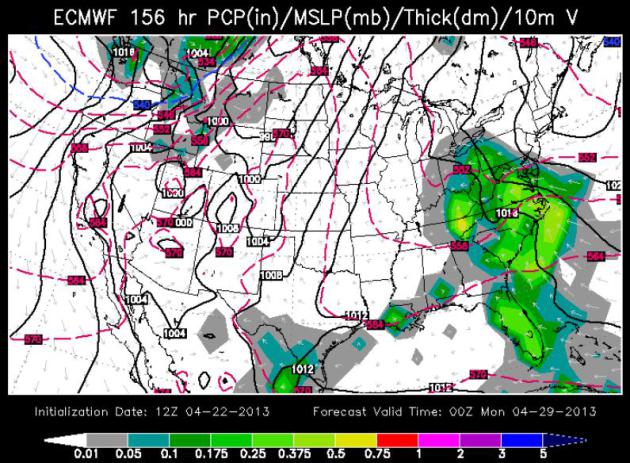
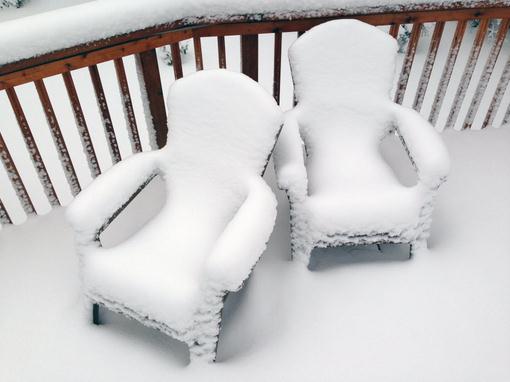

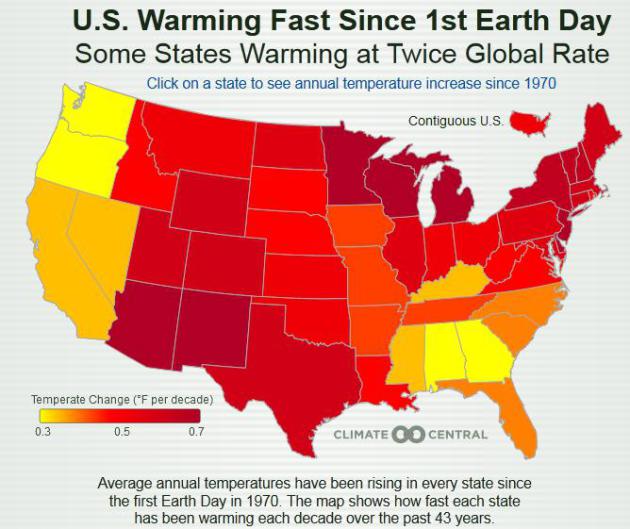
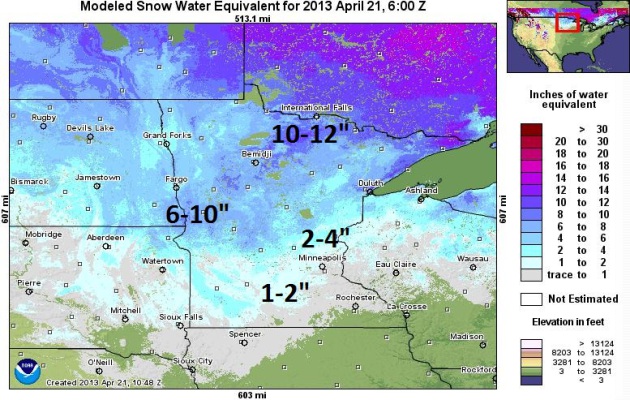
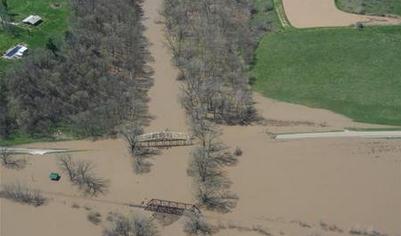
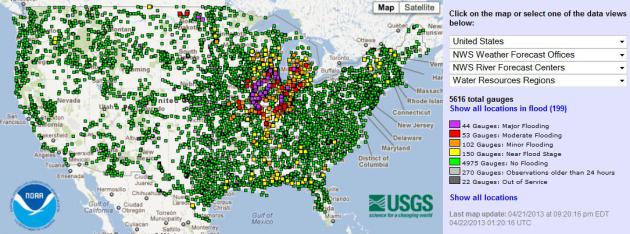
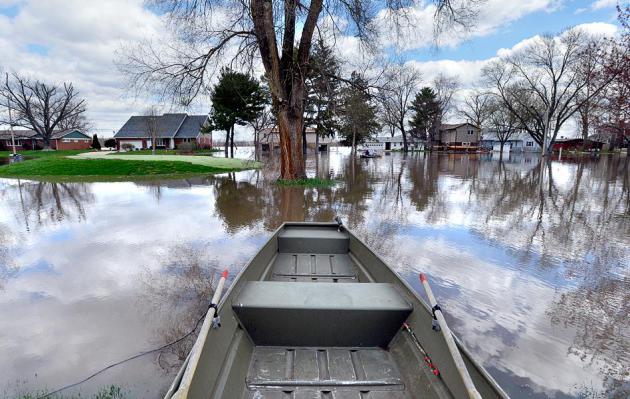
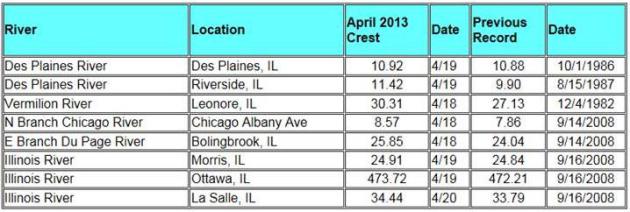
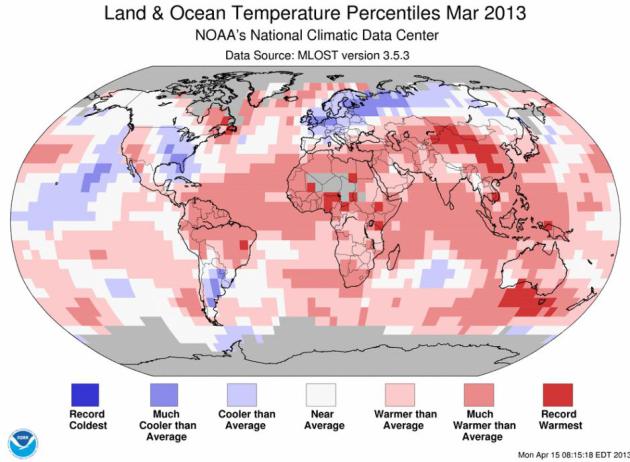

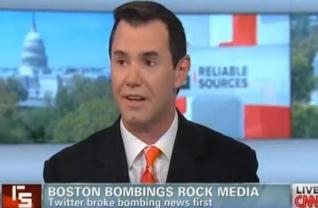



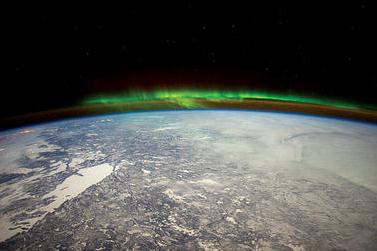
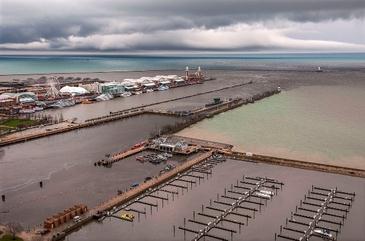
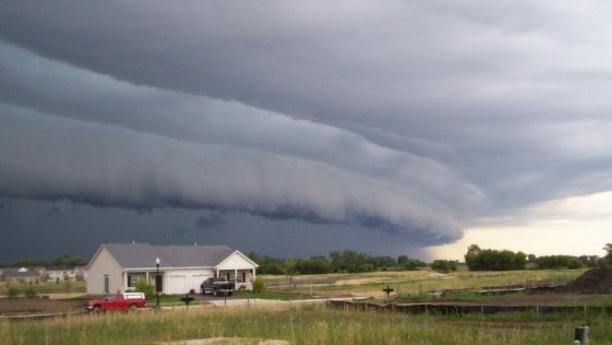




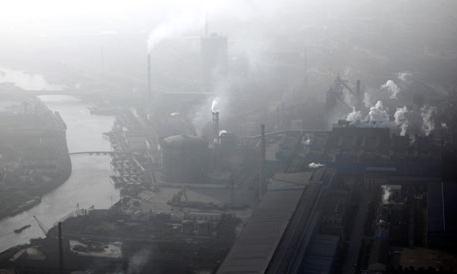

No comments:
Post a Comment